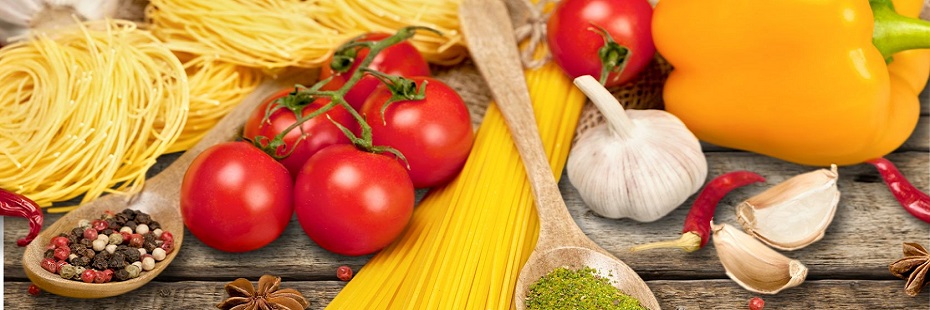| Secondo il calendario Giuliano, il solstizio d'inverno iniziava il 13 dicembre, il giorno più breve dell'anno. I pagani sapevano organizzarsi durante gli scuri mesi di dicembre: per garantirsi il ritorno del sole portavano offerte, decoravano gli alberi e accendevano fuochi, gesti simbolici che supplicavano il ritorno della luce. | According to the Julian calendar, the winter solstice began on December 13th. It was the shortest day of the year. The pagans knew what to do during dark Decembers: to insure the sun's renewal, they made offerings, decorated trees, and lit fires, symbolic gestures that begged the light to return. |
|
|
| Una figura sacra, Lucina, la dea sabina della luce, veniva venerata nel giorno più buio. Nel suo ruolo di levatrice, Giunone-Lucina era la dea che portava il miracoloso sole-bambino alla luce durante la festività di Yule/Jöl (o "ruota"). | A sacred figure, Lucina, the Sabine goddess of light, was worshipped on the darkest day. In her role as midwife, Juno-Lucina was the diety who brought the miraculous sun-child into the light at Yule/Jul [or "wheel"]. |
| Le festività non si fermavano lì. Nel terzo secolo (d.C.) il 25 dicembre fu eletto come "compleanno dell'invincibile sole" e divenne parte di una serie quindicinale di incredibili celebrazioni romane in onore di Saturno (chiamate anche Saturnalia). Nel IV secolo queste feste solari romane furono cristianizzate. Nessuna religione può avere successo senza un calendario completo delle festività! La maniera più semplice per creare le festività cristiane era quella di rinnovare e riformare le pratiche pagane. | The party didn't stop there. By the third century A.D., December 25 was established as the birthday of the "Invincible Sun" -- part of a festive fortnight of wild Roman celebrations honoring Saturn, also known as Saturnalia . By the fourth century, these Roman solar feast days were Christianized. No religion can succeed without a full holiday schedule. The easiest way to create Christian holy days was to reform or renovate pagan practices. |
| In coincidenza con il regno dell'imperatore romano Diocleziano, (culmine della persecuzione cristiana), Lucio, un benestante padre siracusano (l'allora capitale della Sicilia) aveva una casta figlia adolescente. Disdegnando il matrimonio, il sesso e i beni materiali, Lucia portava cibo ai ribelli che si nascondevano nelle catacombe. Un corteggiatore indispettito la denunciò e la giovane vergine fu condannata a morte. | Coincidentally, Lucio, a wealthy father in Syracuse (then the capital of Sicily) had a chaste teenage daughter Lucia during the reign of the Roman emperor Diocletian, the height of the Christian persecution. Spurning marriage, sex, and worldly goods, Lucia carried food to rebels hiding in the catacombs. An angry suitor reported her, and the young virgin was put to death. |
| Dopo il suo martirio (avvenuto il 13 dicembre 304 d.C.) a cause delle tradizioni che associavano il suo nome alla luce, Lucia divenne la patrona della vista e dei raccolti. Gli artisti medievali la dipingevano mentre portava un fascio di grano e un piatto con delle piccole torte (più tardi scambiate erroneamente per i suoi occhi). | After her martyrdom on December 13, 304 A.D., because of various traditions associating her name with light, Lucia came to be thought of as the patron of sight and the harvest. Medieval artists depicted her carrying a sheaf of wheat and a dish containing little cakes, mistaken later for her eyes. |
| Anche se la Chiesa cattolica cercò di reprimere ogni aspetto femminile del principio divino, questa giovane martire siciliana fu uno dei primi santi cristiani a raggiungere la popolarità e ad avere un ampio numero di seguaci prima del V secolo. | Although the Catholic Church attempted to suppress any feminine aspect of the divine principle, this young Sicilian virgin-martyr was one of the earliest Christian saints to achieve popularity, having a widespread following before the 5th century. |
| Forse a causa dei missionari che narravano i racconti del suo martirio e della castità, il culto di Santa Lucia si diffuse fino alla Scandinavia, alle Americhe e più lontano. Le si attribuivano miracoli. Le leggende raccontavano di una carestia in cui, quando fu invocato il nome di Santa Lucia, apparve una nava carica di grano dorato. In seguito, la Chiesa fece di Lucia una santa. | Perhaps because missionaries repeated tales about her martyrdom and chastity, Santa Lucia's cult spread to Scandinavia, the West Indies, and elsewhere. Miracles were ascribed to her. Legends told of a famine, when Saint Lucy's name was invoked in prayer -- and then a ship appeared, laden with golden wheat. Later on, the early Church made Lucy a saint. |
| Caravaggio
e altri artisti la dipinsero. In suo onore
furono composte poesie e canzoni. Il grande
Caruso cantava "Santa Lucia",
una barcarola napoletana. Il suo ammiratore,
Mario Lanza, incise la stessa canzone.
Un grandissimo ammiratore di Lanza, Elvis
Presley, ne incise a sua volta una versione. Non molte martiri adolescenti vantano canzoni composte appositamente per loro nè dolci (divenuti popolari) preparati per la loro festa. |
Caravaggio
and others painted her. Songs and poems
were composed in her honor. The Great
Caruso sang "Santa Lucia," a
Neapolitan barcarole. His admirer, Mario
Lanza recorded this folksong, too. Lanza's
lifelong fan, Elvis Presley, also recorded
it. Not many teenage martyrs have their own theme songs as well as popular desserts prepared on their feast day. |
| In Sicilia, tradizionalmente, il 13 dicembre si mangia la "Cuccia" invece che il pane, per commemorare la santa che portò il grano ai siciliani affamati e colei che protegge le persone che hanno malattie agli occhi. (La parola siciliana "Cuccia" deriva dall'arabo "kiskiya" (terracotta o grano) | Traditionally, on December 13th, "Cuccia" is served instead of bread to commemorate the saint who brought wheat to the starving Sicilians, and who watches over those with eye disease. [The Sicilian word "Cuccia" comes from the Arabic "kiskiya" (earthenware or grain).] |
| Il giorno di Santa Lucia: Cuccia - una Zuppa | St. Lucy's Day: Cuccia - a Soup |
INGREDIENTI:
|
INGREDIENTS:
|
| ISTRUZIONI:
Lasciate a bagno gli ingredienti per tutta
la notte. Sciacquateli e cucinateli separatamente
(hanno diversi tempi di cottura). Il grano
acquista una buona consistenza se cucinato
3/4 ore (a seconda che sia grano tenero
o duro). Per le fave ci vogliono 2 ore
e per i ceci 1 ora. Salate l'acqua (1 cucchiaino). Si può aggiungere a ciascun ingrediente l'aglio e la foglia d'alloro. Aggiungete il peperoncino a piacere. Dopo che gli ingredienti hanno cucinato separatamente li si combina. Si aggiunge l'olio d'oliva (circa 1/3 di tazza) in modo da ricoprire completamente gli ingredienti con un sottile strato. A questo punto si mescola la Cuccia e si serve calda in un piatto da zuppa. In alcune città vengono aggiunti i piselli o il mais. A Isnello, in provincia di Palermo, Sicilia, la ricetta richiede solo di mettere a bagno il grano (450 grammi) per tutta la notte, risciacquarlo e bollirlo per ore finché non diventi tenero. Viene servito con latte e zucchero, come l'avena. |
METHOD:
Each ingredient is soaked overnight, rinsed,
and cooked separately, since these items
cook at different rates. The wheat has
a good consistency if cooked 3-4 hours
depending upon if it is winter wheat or
summer. The fava beans take about 2 hours
and the ceci takes about 1 hour. The water should be salted with a teaspoon of salt. Garlic can be added to each as well as a bay leaf. Crushed red pepper can be added to taste. After ingredients are cooked separately, they are combined. Olive oil is added to form a thin layer on top, about 1/3 cup. The Cuccia is then stirred and served hot in a soup bowl. Some towns added cooked dried peas and/or corn as well. In Isnello, Palermo, Sicily, the recipe called for just soaking the wheat (1 pound) overnight, rinsing it the next morning, and boiling it for hours until it was tender. It was served with milk and sugar, similar to oatmeal. |
| La Cuccia siciliana del giorno di Santa Lucia: un Dolce | St. Lucy's Day Sicilian Cuccia: a Dessert |
INGREDIENTI (per 12 persone):
|
INGREDIENTS (serves 12):
|
| ISTRUZIONI:
Mettete i chicchi di grano a bagno per
tutta la notte. Se non li cucinate la
mattina potete lasciarli ancora in acqua
(ma cambiate l'acqua al mattino). Scolate
il grano e mettetelo in una casseruola
a base larga con acqua (che lo ricopra
fino a quasi 2 palmi). Aggiungete sale
e lasciate cuocere per 3 ore (o finché sia
tenero). Quando è pronto, scolate
l'acqua in eccesso. Mettete il grano da
parte (coperto). In una piccola ciotola sbattete l'amido di mais con 1/2 tazza di latte finché l'amido si dissolva e diventi omogeneo. Mettetelo in una casseruola con il latte rimanente, la scorza di limone e il cioccolato. Cucinate a fuoco lento, girando in continuazione, finché il latte si inspessisce. Attenzione a non far bollire il latte. Rimuovete dal fuoco e unitevi il grano. Aggiungete i limoni canditi un attimo prima di servire. |
METHOD:
Soak wheat berries in water overnight.
If you aren't cooking them in the morning,
the wheat berries can continue to soak,
but change water in the morning. Drain
wheat and place in a wide-bottomed soup
pot with water to cover by two inches.
Add salt and simmer for three hours (or
until tender). Add water if necessary.
When tender, drain excess water. Set aside,
covered. In a small bowl, whisk cornstarch with 1/2 cup milk until cornstarch is dissolved and smooth. Put in a saucepan with remaining milk, lemon zest, and chocolate bits. Cook over low flame, stirring continuously, until milk thickens. Be careful the milk does not boil. Remove from heat and mix with drained wheat. Add citron just before serving. |
| La Corona di Santa Lucia | St. Lucy's Crown |
INGREDIENTI (per 1 corona):
|
INGREDIENTS [for 1 crown]:
|
ISTRUZIONI:
Mettete 1/4 di acqua tiepida in una
terrina tiepida. Spolveratevi il lievito
e girate finché è disciolto.
Aggiungete l'acqua rimasta, il latte
tiepido, lo zucchero, il burro, il sale,
lo zafferano e 1 tazza e mezzo di farina;
amalgamate bene. Unite 2 uova e abbastanza
farina (di quella avnzata) per fare
una pasta morbida. Lavorate l'impasto
(su una superfice spolverata di farina)
finché diventi morbido ed elastico
(circa 6/8 minuti). |
METHOD:
Place 1/4 cup warm water in large warm
bowl. Sprinkle in yeast; stir until
dissolved. Add remaining water, warm
milk, sugar, butter, salt, saffron,
and 1 1/2 cups flour; blend well. Stir
in 2 eggs and enough remaining flour
to make soft dough. Knead on lightly
floured surface until smooth and elastic,
about 6--8 minutes. |
| Glassa di zucchero: In una piccola terrina mescolate 1 tazza di zucchero a velo setacciato, 4 o 5 cucchiaini di latte e mezzo cucchiaino di estratto di vaniglia. Mescolate finché è omogeneo. | Powdered Sugar Frosting: In small bowl, combine 1 cup powdered sugar, sifted; 4 to 5 teaspoons milk; and 1/2 teaspoon vanilla extract. Stir until smooth. |
| [Nota: Con il cambiamento introdotto dal calendario Gregoriano nel 1300, il solstizio d'inverno ora cade il 21 Dicembre]. | [Note: The winter solstice now falls on December 21, with the change to the Gregorian calendar in the 1300s.] |
| LindaAnn Loschiavo, redattrice per la sezione di N.Y. dell'Italian Tribune |
LindaAnn Loschiavo, NYC editor, Italian Tribune |
TESTIMONIAL (more...):








